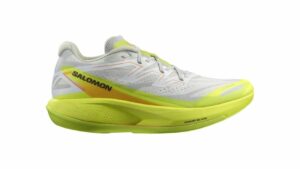Beauty and the Bruce: The Falling Water Trail, Beaver Valley, Ont.
This new loop section of Ontario’s Bruce Trail is well maintained and drop-dead gorgeous.
Like a river winding to the sea and gradually shifting the path of its flow, the Bruce Trail from Niagara to Tobermory runs neither straight nor constant. It wends over 885K of southern Ontario fields, escarpment, hardwood and cedar, country roads and the occasional highway to cover a distance that’s only 366K by car.
While a river answers to gravity, the Bruce Trail does the opposite to seek out what its builders call “the optimum route.” Every year since volunteers hastily hammered out the first walk in the woods in the mid-60s, the Bruce Trail Conservancy’s continual revisions have nudged the old route ever closer to the ragged spine of the Niagara Escarpment and deeper into its wildest bits.
The Bruce made one grand leap towards optimality last summer with the opening of the Falling Water Trail, stitching 30K of mostly new trail into a rugged and scenic loop around the Beaver Valley, about a two-hour drive from Toronto. For the past year, I’ve been running the Bruce Trail in one-day chunks starting from the south end. Having completed about two-thirds, I can say that this is not only one of the Bruce’s newest and best-maintained sections, but also one of its most scenic. The Beaver Valley packs a perfect sample of the escarpment’s terrain and scenery, from sheer limestone cliffs to vast canopies of maple woodlots, abandoned fields and the Falling Water’s namesake cascades. Eugenia Falls tumbles off the valley’s east rim and Hogg’s Falls churns up the Beaver River not far upstream. Along the way, many small streams, waterfalls and pools welcome you to dunk your head, nab a shower or soak your sweatband.
Best of all, unlike most stretches of the Bruce, the Falling Water Trail forms a natural loop with no junk mileage. There are also several ways to cut back to your car on quiet country roads if you don’t want to run the whole thing. Campbell’s Hill and Graham’s Hill roads bisect the valley, making the southern section into a 21.5K circuit that includes the two main waterfalls. The Lower Valley Road follows the Beaver River. The trail’s eastern segment emerges onto this shady gravel road once between Hogg’s Falls and Campbell’s Hill, connecting two optional O’s totalling about 17K of the valley’s best running. Starting at Hogg’s Falls and running the road to warm up, this squiggly figure-eight is my fave for a couple hours out, nicely mixing the speed of the valley road with the technical trail climbs and ridge runs up and around Eugenia Falls.
The Falling Water Trail seldom stays at one elevation for long, so prepare for steep and burly side-slopes and gruelling ascents, particularly on the Valley Crossover Side Trail (the old main, sub-optimal route) which drops 150 metres to the Beaver River and straight back up the opposite side over a couple kilometres, crossing the grassy, sun-baked slopes of the Beaver Valley Ski Club. Also, the valley’s west side between Johnston’s Sideroad and Graham’s Hill Road features a cobbled and overgrown side-slope that’s particularly greasy when wet. So if you’re not set on running the whole 30K, these are good sections to skip.
Location: Beaver Valley is northeast of Flesherton, Ont., about two hours’ drive from Toronto via Highway 10. From Flesherton, take Highway 4 East, turn left on East Back Line, right on Lower Valley Road, and park at Hogg’s Falls. There’s also a parking lot at Eugenia Falls Conservation Area and roadside parking at other access points.
Map: Go to brucetrail.org > Trail Changes > Upper Valley Extension – Beaver Valley
Tim Shuff is a Toronto-based freelance writer and editor.


